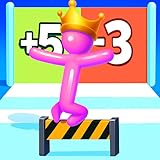Rediscover the Classics: Essential PS3 Games Still Worth Playing Today
The PlayStation 3 console, launched in 2006, possesses an incredibly rich library, with over 1,400 games made available during its lifespan. This extensive collection, highlighted in the accompanying video, includes a remarkable mix of exclusive titles and beloved third-party offerings. Furthermore, a significant number of these consoles can access more than 1,000 PlayStation 1 games through backward compatibility. Despite such a vast array of choices, it often proves challenging for enthusiasts to discern which of these PS3 games truly stand the test of time, especially as technology advances. This article delves deeper into three specific titles that are genuinely considered worthy of revisiting, offering unique experiences that remain relevant and enjoyable.
Mirror’s Edge: A Masterclass in Movement (Released 2008)
Among the standout titles, Mirror’s Edge emerges as a truly distinctive action-adventure experience. Released in 2008, it was positioned amidst a year that also saw the launch of behemoths like Grand Theft Auto 4 and Fallout 3. It is often believed that this crowded release schedule may have contributed to a somewhat mediocre initial reception for this unique game. However, its core mechanics and aesthetic have since garnered a dedicated following.
This title effectively functions as a parkour simulator, allowing players to embody Faith, a “runner” in a highly monitored, futuristic metropolis. Her mission, driven by a conspiracy involving her framed sister, involves traversing rooftops and intricate interior spaces while constantly evading an oppressive police force. The narrative concept is generally well-regarded, yet the delivery and conclusion of the story are sometimes cited as minor weaknesses.
Graphically, Mirror’s Edge boasts a clean, striking visual aesthetic. Moving seamlessly across buildings and performing daring leaps of faith is incredibly satisfying, with the game’s responsive controls allowing for fluid actions such as wall running, sharp turns, and combat maneuvers. The immersive animation system further enhances the feeling of controlling Faith’s every move. Despite the option to engage in combat and utilize enemy weapons, the game’s design encourages players to find non-lethal solutions, emphasizing movement and progress over direct confrontation. This emphasis on agility is complemented by the “runner’s vision,” a creative in-game mechanic that subtly highlights navigable objects in red, guiding Faith through the environment.
With an approximate gameplay length of six to eight hours, Mirror’s Edge is considered a concise experience. However, in the context of modern gaming, this focused duration is often appreciated, particularly as the game can now be acquired at a very affordable price. While the PC version and Xbox One’s backward compatibility might offer slightly enhanced visuals, the PS3 version still delivers a visually appealing experience, showcasing its timeless art direction.
Call of Duty 4: Modern Warfare: The FPS Revolution (Released 2007)
Stepping back one year, Call of Duty 4: Modern Warfare, released in 2007, fundamentally reshaped the first-person shooter genre. Upon its release, players were consistently impressed by its groundbreaking story, realistic graphics, and robust multiplayer component, features that have maintained its popularity for over a decade. Intriguingly, the online servers for the PS3 version of this game are still operational, largely supporting Team Deathmatch, a testament to its enduring appeal.
The campaign mode of Call of Duty 4 is widely regarded as a masterclass in cinematic storytelling. Players are immersed in a global conflict, experiencing diverse missions through the perspectives of multiple characters. This allows for a compelling blend of stealth operations and intense, all-out warfare across various international settings, including Russia. The gunplay, combined with pivotal story moments, creates a deeply engaging experience that, even today, rarely feels dated. In fact, some long-time fans suggest that the movement mechanics in Call of Duty 4 offer a more satisfying feel compared to some more recent iterations in the franchise.
From a historical perspective, revisiting this game provides valuable insight into its immense influence on the gaming landscape. It is widely acknowledged that Call of Duty 4 elevated the standards for console first-person shooters, establishing new benchmarks for presentation and gameplay fluidity. Its innovative perk system, which was refreshingly simple to understand, laid the groundwork for future titles. The enduring availability of its online multiplayer servers means that players can still capture the essence of its competitive action, even if the primary mode available is Team Deathmatch. For many, Call of Duty 4: Modern Warfare represents the quintessential “comfort food” of video games, a consistently rewarding experience despite the franchise’s evolution.
3D Dot Game Heroes: A Charming PS3 Exclusive (Released 2010)
Moving into 2010, 3D Dot Game Heroes presents a charming, often overlooked, PlayStation 3 exclusive. Initially, its stylized visuals and unique name might have suggested a game aimed at a younger audience, causing some potential players to overlook it. However, this title is a loving homage to classic 8-bit and 16-bit action-adventure games, specifically drawing inspiration from the beloved Zelda series.
During a generation dominated by the pursuit of increasingly realistic graphics, 3D Dot Game Heroes boldly adopted a distinct, voxel-based art style. The developers chose to pay tribute to the classic 2D look, ingeniously justifying this aesthetic within the game’s lore: the in-game king declared the old 2D style outdated and decreed a shift to 3D. This clever narrative device enhances the game’s overall charm and personality.
One of the most engaging features is the robust character creation system, which allows players to design their own blocky hero. The game provides numerous default options, including whimsical choices like Santa Claus, encouraging creative expression. Conversely, the combat system introduces a unique mechanic tied to player health: when Faith possesses full health, she wields an impressively large sword capable of significant damage; however, sustaining any damage causes her weapon to shrink considerably. This innovative design element strongly incentivizes players to avoid enemy hits, adding a strategic layer to battles.
Beyond these unique elements, 3D Dot Game Heroes embraces the foundational components of its inspirations. It features an expansive map, multiple dungeons, engaging puzzles, and classic tools such as boomerangs and bombs. The puzzles, while perhaps not groundbreaking in their originality, are thoughtfully designed and contribute to a satisfying progression through the game’s various environments. This title serves as an excellent example of a hidden gem on the PS3, demonstrating that the console’s library extends far beyond its mainstream blockbusters, offering diverse and delightful experiences for those willing to explore.
Revisiting these captivating PS3 games allows players to reconnect with a significant era of gaming history. The affordability of these classic titles in the current market, coupled with their inherent quality, makes them an incredibly appealing option for both nostalgic gamers and those discovering them for the first time. The vast catalog of PlayStation 3 games continues to offer countless hours of enjoyment and discovery, underscoring the enduring relevance of past console generations.









